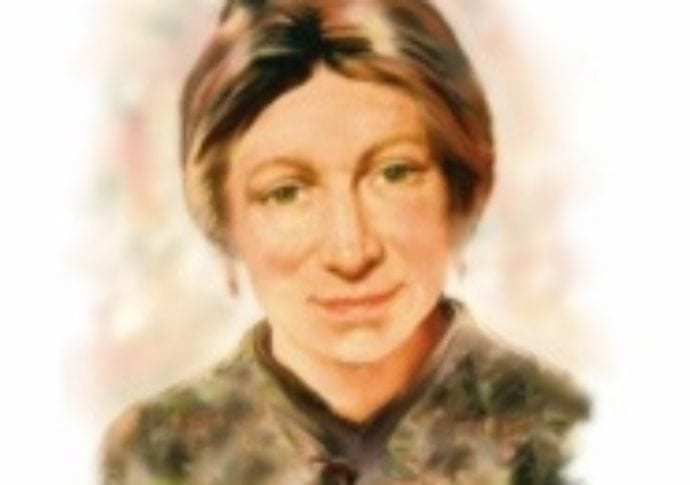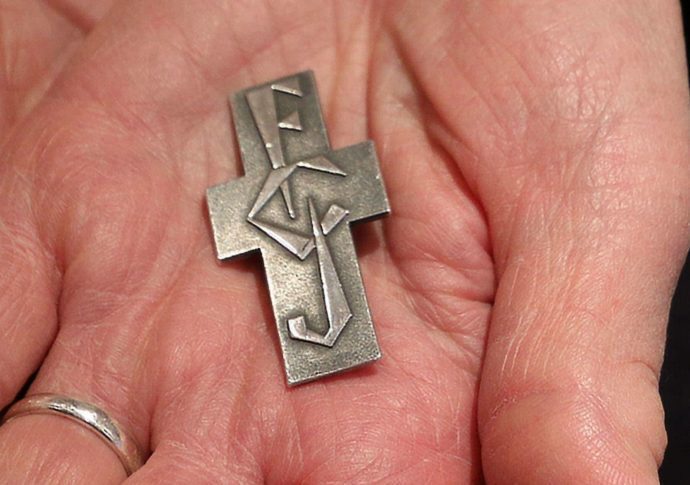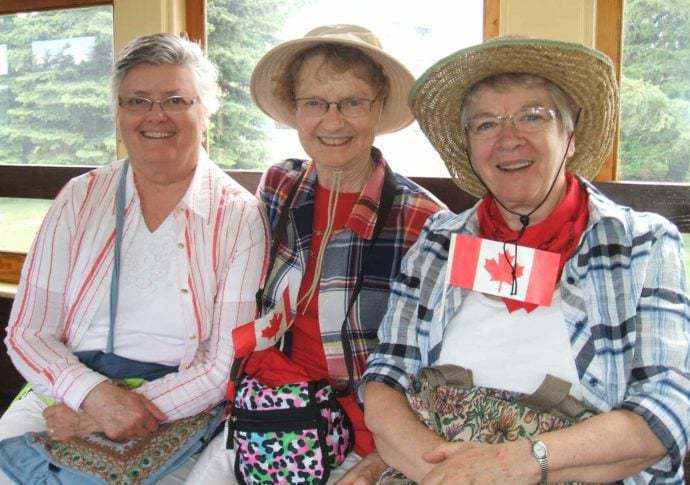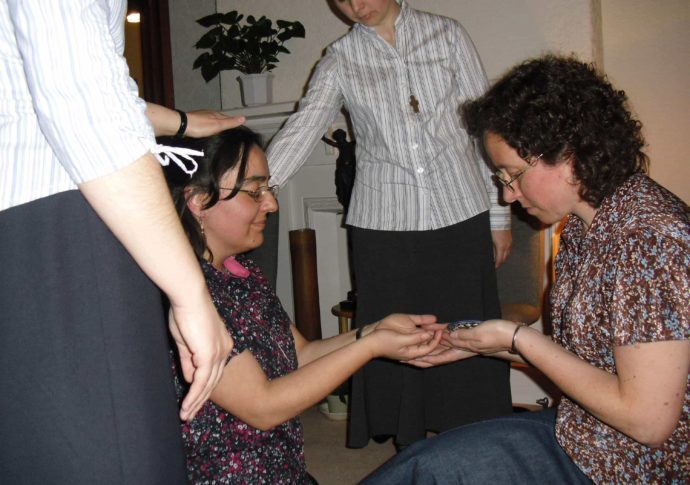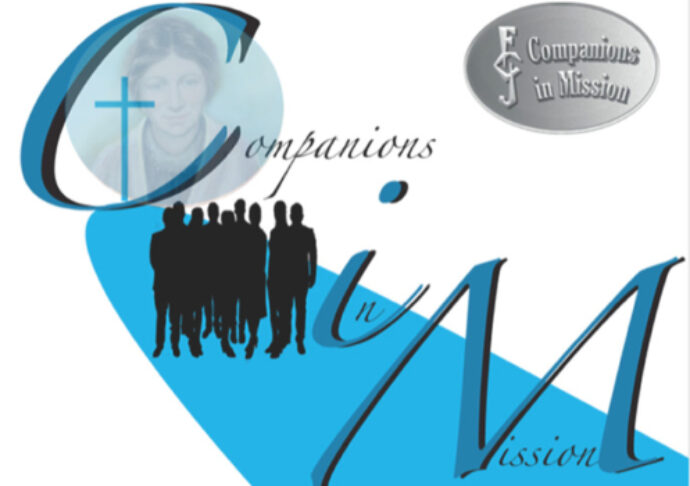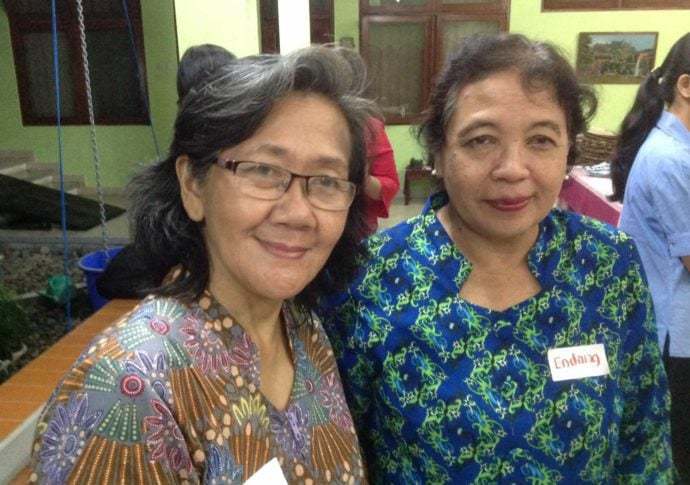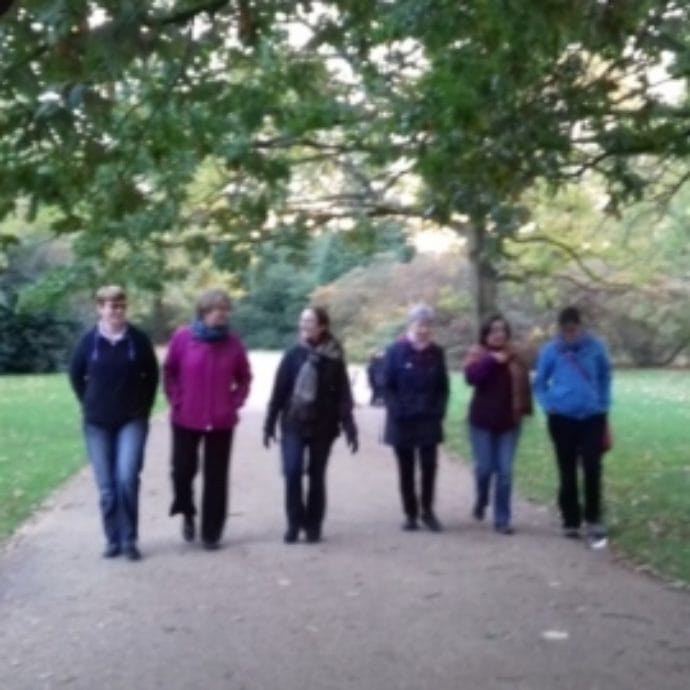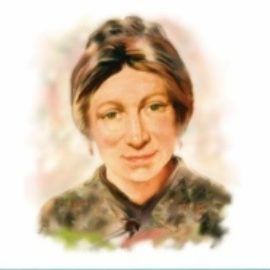Ann Rennie, Companion in Mission from Australia, shares a reflection on Easter that she has prepared for her parish newsletter. Ann teaches English and Religious Education at Genazzano FCJ College
Therefore, since we are surrounded by so great a cloud of witnesses, let us also lay aside every weight and the sin that clings so closely and let us run with perseverance the race that is set before us, looking to Jesus, the pioneer and perfecter of faith, who for the sake of the joy that was set before him endured the cross, disregarding its shame, and has taken his seat at the right hand of the throne of God. (Hebrews 12: 1-2 NRSV)
Easter Sunday starts in the inky cauldron of the night.
Slowly, softly, imperceptibly the black swatch of sky with its tiny seed pearl stars disappears. Tendrils of orange light peek through the cloudy canvas, the colour blazing against the ebony remnants of the darkling hours.
Sleeping hills and dreaming seas and softly snoring children are beckoned into wakefulness.
The nocturnal fears of strange noises and swollen shapes and silent shadows slip away in the mist. Silhouetted stalkers vanish. Spectral fancies no longer play hide and seek.
The shattering horror and hurt of that Friday crucifixion cannot be undone in the men and women who wait for a sign that Jesus has not abandoned them as he was abandoned. Their dark night of the soul, its desolation and unmooring from all that is certain and true, all that was promised, flays their hearts.
Their Saturday night is without point or purpose as they wait in vigil for what they know not. They are bereft. A black pall hangs over their anguished minds. They are alone, restless and tremulous, lost, sheep without their shepherd. There are tears and headaches and disbelief, a pervasive gloom. Words are few as their world is dimmed beyond recognition.
They cast their minds back to the tumultuous week just past; the adulation as Jesus rode into Jerusalem to a chorus of hosannas, the Last Supper, the betrayal by Judas, the denial by Peter, the vacillating crowd who chose Barabbas over Jesus for release from prison, those religious elders who sought Jesus’ execution because his teaching threatened their position and privilege, the disciples fearful and frozen as the wheel of destiny turns, the women who stand staunchly at the foot of the cross, their faith steadfast even unto death.
Then the long abject hours of Saturday night, muted voices, broken hearts, Jesus’ followers bewildered and perplexed. A world disjointed.
The evangelist Luke tells us that very early the next morning the women who followed him went to the tomb, but found no body of the Lord. Bedazzling angels reminded them of his promise to rise again on the third day. The words, “He is risen” are spoken, their utterance a triumph over darkness and death.
However, the disciples did not believe the women and thought their words nonsense, the overheated imaginings of those who could not sleep as they sought to tend the body of this man who had changed their world. But then, a dawning realisation that this was true. The gospel writers have slightly varied accounts of that fateful Sunday morning, but the resurrection of Jesus of Nazareth lies at the core of each telling.
The theologian, Hans Urs von Balthasar, notes that if one does away with the fact of the resurrection, one also does away with the cross, for both stand and fall together, and one would have to find a new centre for the whole of the gospel. The death and resurrection are the twin peaks of our faith.
The resurrection is the light of salvation overcoming the dark of sin. For Christians around the world, it is central to belief, the whole point of the faith in the Son of God who suffered as a mortal man, but rose in divine destiny in fulfillment of the scriptures.
With the resurrection, we, too, are raised up, knowing that there will come the time for transfigured bodies and resplendent souls, the final liberation from earthly bonds into the life of hope eternal.
We have moved from desolation to consolation.
And so, as the women of Jerusalem carried spices to the tomb, the things of dark became the things of light; sure and solid and safe and seen. Jesus is seen by Mary Magdalene, Peter, the two disciples on the road to Emmaus. These two later reflect that their hearts were ablaze as they walked with and listened to this stranger who they then recognised in the breaking of the bread.
Small birds sang that first Easter Sunday morning in; a sparrow-sparky serenade of chirrups and chortling and good will to all.
Dawn scooped the remains of night away and changed the course of history.
The dark was overcome with light.
For Christians, Easter provides us with a new canvas on which to script the meaning of our days. Our hearts, too, should be ablaze as we share in the love alive in the greatest story ever told.
As an Easter people we sing Alleluia as we bask in this new dawn.
We experience the joy of knowing that we rise, alive to the light, with the Son.
Photo: Easter candle in the chapel of the FCJ community St Hugh’s in Liverpool, England
Read other contributions by Ann Rennie on our website. Learn about the FCJ Companions in Mission.





